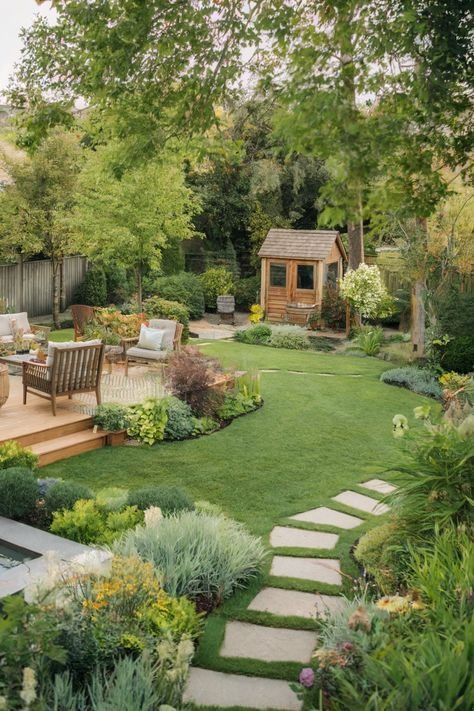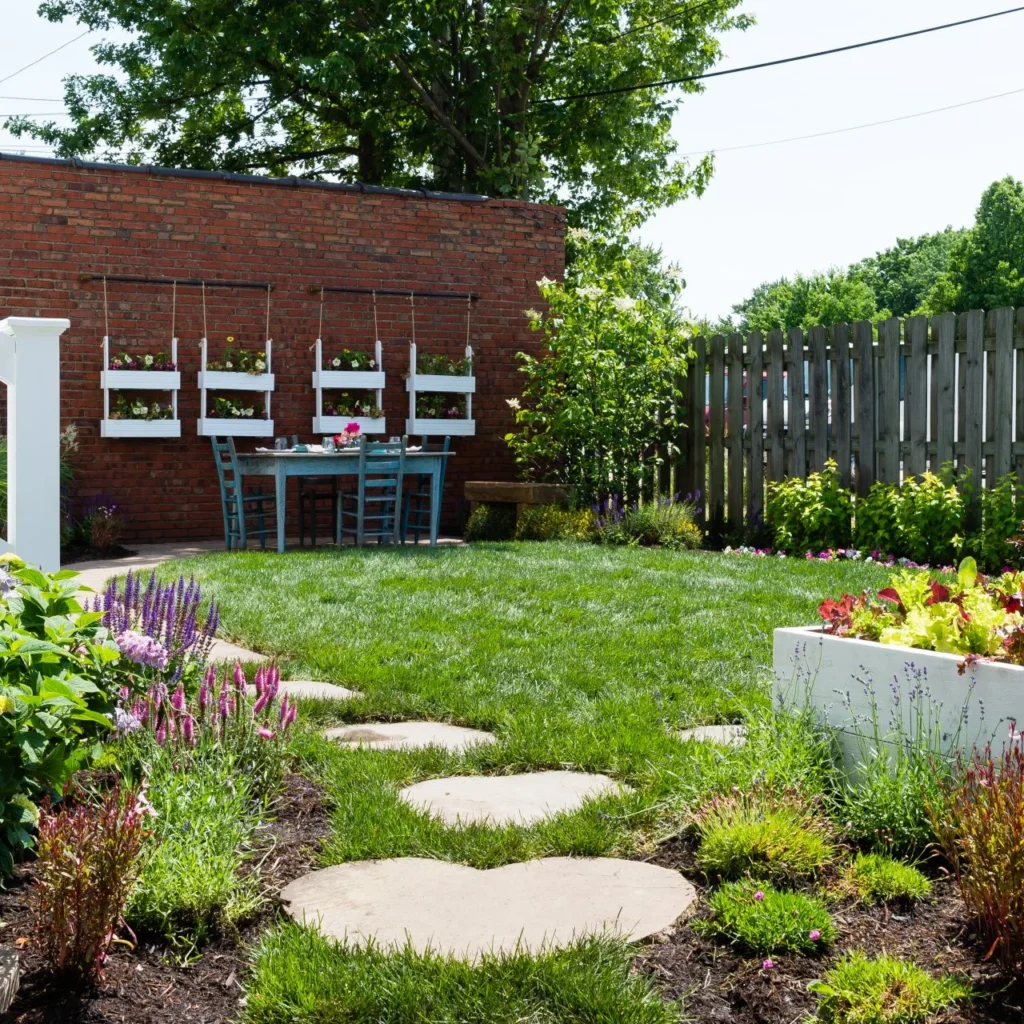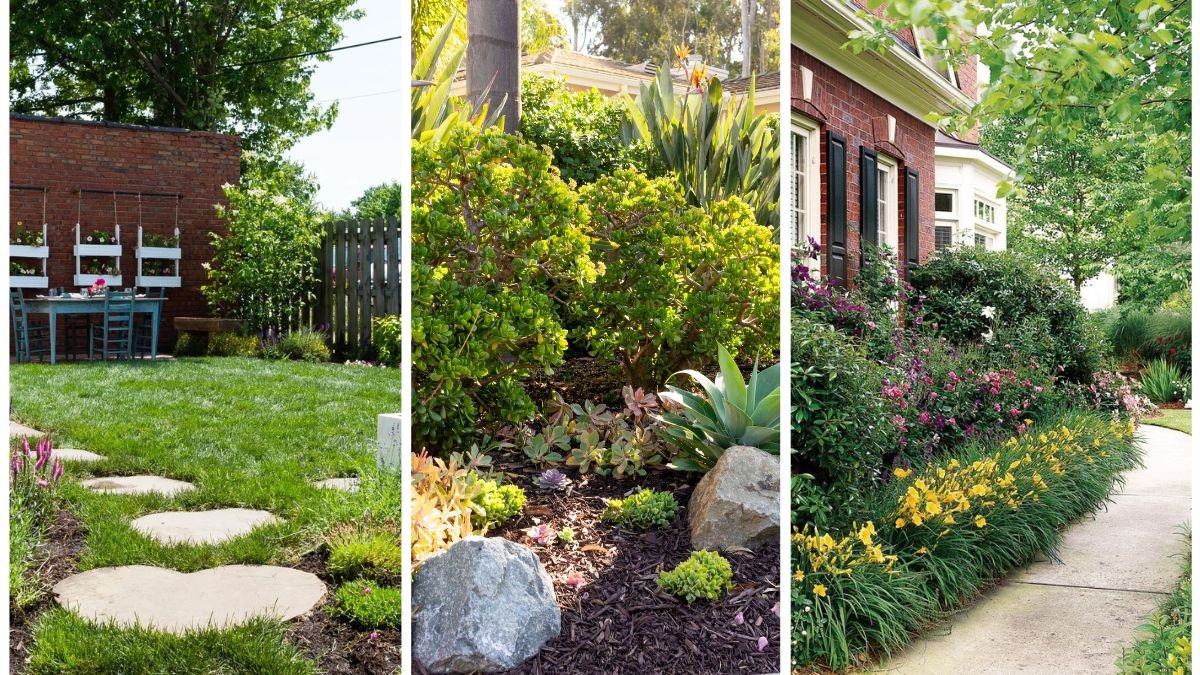A small yard can sometimes feel limiting, but with thoughtful landscaping, even the tiniest outdoor spaces can appear spacious, functional, and visually appealing. The key lies in design strategies that create the illusion of depth, maximize usable space, and draw attention to focal points rather than the yard’s boundaries. In this article, we explore five landscaping tricks that can transform small yards, making them feel larger, brighter, and more inviting.
1. Use Vertical Space to Create Height and Depth

In small yards, horizontal space is limited, so leveraging vertical space is a powerful way to add dimension and visual interest. Vertical elements guide the eye upward, making the yard appear larger than it is.
- Trellises and Arbors: Climbing plants such as clematis, jasmine, or ivy can grow on trellises, arbors, or pergolas. These structures draw attention upward and add texture without occupying much ground space.
- Vertical Gardens and Wall Planters: Installing living walls or vertical planters allows you to grow flowers, herbs, or greenery without taking up floor space.
- Tall Plants: Incorporate upright shrubs, ornamental grasses, or small trees in corners to add height and frame the yard.
- Layered Planting: Position taller plants at the back, medium-height plants in the middle, and low-growing plants near pathways or edges. This layering enhances the perception of depth.
Benefits:
- Creates the illusion of a larger, more expansive space.
- Adds visual interest and draws focus away from the yard’s small dimensions.
- Increases the variety of plant textures and colors without cluttering the ground.
By emphasizing vertical elements, you make your yard feel dynamic, spacious, and thoughtfully designed.
2. Incorporate Mirrors and Reflective Surfaces

Mirrors are a surprisingly effective landscaping trick that can dramatically expand the perceived size of a small yard. They create reflections, double the visual space, and add brightness.
- Wall-Mounted Mirrors: Install mirrors on fences, walls, or sheds to reflect greenery, flowers, or sky. Position them strategically to reflect the main focal point of your yard.
- Reflective Water Features: Small ponds, fountains, or containers filled with water act as natural mirrors, reflecting sunlight and surrounding plants.
- Shiny Surfaces: Use glossy pots, metallic planters, or glass decor to bounce light around the space, adding depth and enhancing brightness.
Benefits:
- Makes narrow or enclosed yards appear larger.
- Adds a sense of light and openness, even in shaded areas.
- Creates visual interest and a sense of dimension.
Mirrors and reflective surfaces trick the eye into perceiving more space than exists, instantly expanding the feel of a small yard.
3. Use Strategic Pathways and Layouts

The layout of a small yard can either enhance or diminish its perceived size. Thoughtful pathways and spatial design help draw the eye through the garden, creating an illusion of depth.
- Curved Pathways: Gentle curves in walkways make the yard feel longer and more expansive, as opposed to straight, rigid paths that emphasize boundaries.
- Diagonal Lines: Placing paths or garden beds diagonally extends the perspective, making corners appear farther apart.
- Layered Zones: Divide the yard into visual zones such as a seating area, planting bed, or water feature. Transitional pathways guide the eye and create a sense of exploration.
- Minimal Clutter: Avoid overcrowding pathways with furniture or excessive ornamentation. Open pathways enhance the feeling of space and ease of movement.
Benefits:
- Creates the perception of longer, deeper spaces.
- Encourages functional use of every corner.
- Enhances visual flow and garden accessibility.
A well-planned pathway strategy turns a compact yard into a series of inviting, interconnected spaces.
4. Choose Scale-Appropriate Plants and Furniture

Using oversized furniture or large plants can make a small yard feel cramped. Selecting appropriately scaled elements ensures balance and maximizes the feeling of openness.
- Compact Plants: Dwarf shrubs, small perennials, and low-maintenance ground covers prevent the space from feeling overcrowded while maintaining lushness.
- Vertical Containers: Tall, narrow planters take up less floor space while drawing the eye upward.
- Small-Scale Furniture: Choose petite chairs, benches, or foldable tables to create cozy seating without dominating the space.
- Minimalist Decor: Limit bulky garden ornaments and choose decor that complements rather than overwhelms the yard.
Benefits:
- Maintains proportionality and balance within the yard.
- Prevents visual clutter, keeping the space open and airy.
- Allows for both aesthetics and functionality in compact areas.
Using the right scale ensures your yard feels spacious, inviting, and harmonious.
5. Play with Color, Light, and Texture

Colors, lighting, and textures are key tools for creating the illusion of more space. Thoughtful combinations can enhance depth, add interest, and make a small yard feel larger.
- Light Colors: Use pale flowers, foliage, or gravel to make areas feel open and airy. White, lavender, soft pinks, and pastel shades reflect light and expand visual space.
- Vertical and Horizontal Contrasts: Mix vertical elements like trellises with horizontal surfaces like low beds or stepping stones to create depth.
- Layered Lighting: Install pathway lighting, fairy lights, or uplighting on trees to illuminate dark corners and make the yard feel larger at night.
- Texture Variation: Combine fine-textured plants with broader leaves to create visual complexity and prevent monotony.
Benefits:
- Enhances the perception of depth and space.
- Draws attention to focal points while diverting from boundaries.
- Creates a dynamic and visually engaging outdoor space.
By carefully combining colors, textures, and lighting, you can manipulate perception and make a small yard feel open, vibrant, and expansive.
Bonus Tips for Small Yard Landscaping
- Reflective Hardscapes: Use light-colored decking, gravel, or stones to bounce light and brighten corners.
- Layered Plant Heights: Keep taller plants at the back and low-growing plants in front for optimal depth perception.
- Mirror Placement: Mirrors work best across from focal points to maximize reflection and create the illusion of double space.
- Multipurpose Furniture: Foldable tables or benches can serve multiple functions while saving space.
- Vertical Accents: Integrate trellises, obelisks, or hanging baskets to enhance vertical interest without consuming floor space.
These small adjustments amplify space and create a more immersive garden experience.
Conclusion
Small yards may present spatial challenges, but they also offer the opportunity to create intimate, stylish, and efficient landscapes. By incorporating vertical elements, mirrors and reflective surfaces, strategic pathways, scale-appropriate plants and furniture, and thoughtful color and texture combinations, you can make a compact yard feel larger, more dynamic, and inviting.
Every element—from plant choice to layout, lighting, and focal points—contributes to the perception of space. With creativity and careful planning, even the smallest yard can become a beautifully landscaped outdoor retreat that feels open, airy, and visually expansive. These five landscaping tricks allow homeowners to maximize every inch of space, transforming a confined yard into a harmonious, spacious, and functional garden.
